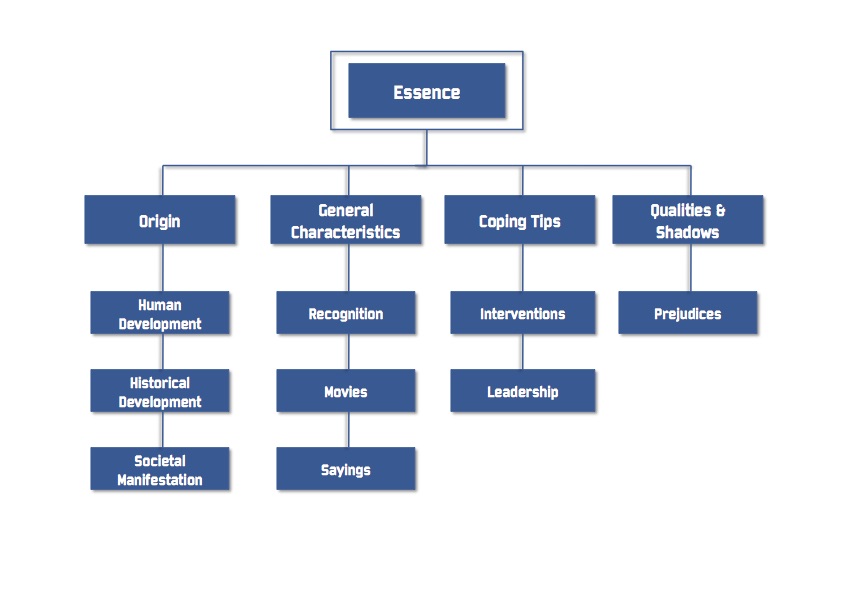Characteristics Blue Value System
On this page, you will, step by step, find the most important characteristics of the Blue value system. Please click on a subject to navigate to the text. The image on the right-hand side of this page is an example of an organization form, which is typical for Blue.
What is the essence of the Blue value system?
Core values:
Authoritarianism, Holy, meaningful
Paradigm:
Order: “We are saved.”
World View:
The world is well organized, purposeful and subjected to holy (Devine) laws, which will punish evil and will reward the “correct” way of living.
Life Motto:
“I sacrifice myself to the Way for a deferred reward.”
Life Theme:
To discover meaning and purpose in life and searching for order, security and stability.
Life Philosophy:
Live according to the Way and the Truth and serving the doctrine and doing duty with an eye on future rewards.
What is the origin of the Blue value system?
Period:
10,000 years ago (rise of agriculture)
Geographical Location:
Iraq: Euphrates and the Tigres
Founders:
Small communities from the Neolithic culture
In reaction to:
Unreliability, injustice and randomness from Red dominance. Life is threatened by impredictability of excessive power and the survival of the fittest. People realize that setting boundaries and mutual agreements cause fewer problems than war.
What did humans develop when the Blue value system was first activated?
Causal thinking, morality, feelings of conscience and guilt, feelings of justice and responsibility, self-control and discipline.
What are the characteristics of the historical development of Blue?
Energy sources:
Beasts of burden, wood and peat, agriculture, wind and water energy (wind mills, sailing boats).
Highlights:
Feudal Middle Ages, rise of cities and forming of nations and countries.
Lowlights:
Crusades, inquisition, absolutism, imperialism and religious terrorism.
Economics:
Feudal system based on agriculture and cattle breeding
Religion:
Conversion to institutionalized religions.
Cultural Theme:
Devotion and worship of God and expressions of patriotism.
Art Forms:
Byzantine art, Gothic, baroque, Rococo.
Leaders:
Patriarch, the Pope, monarch, King and regent.
Invention:
Agriculture and cattle breeding, written language, money, the Law, architecture, irrigation, hydraulics, road construction, the Civil Service, sailing ships.
Modernization:
Institutes (state, church, army, administration of justice), trades and crafts and class society.
What are displays of Blue as the dominant value system in our society?
Community forms:
Cities, nation states, classes and socioreligious groups.
Communities:
SSaudi Arabia, Iran, Indian caste system, orthodox Israel, Puritan America (‘New Born Christians’) and religious sects.
In the Netherlands:
Strict church groups, traditional Muslims, traditional middle classes, conservative liberals, aristocrats, nobility, and communist groups.
Movements/influences:
Trade unions, pension schemes, the legal system and government.
What are the general characteristics of the Blue value system?
- Values and norms, discipline, duty, regularity, and feelings of honor and guilt
- WE versus They Thinking
- Searching for meaning, order, routine and security
- Self-control, discipline and loyalty to the doctrine and the rules
- Absolute, literal and definite
- Morality
- Hierarchy, obedience and willing to sacrifice to a greater cause
- Control and structures of authorities
- Obedience based on a sense of duty and a sense of guilt
- Organize, manage, concretize and structure
- Values effort and responsibility and shows discipline
- Rules, rights and duties are significant
How do you recognize the presence of Blue?
Blue is recognized by the clear presence of order and structure. The form of the game is the topic of conversation, not the game itself. In conversations, people will talk more about the rules of the game than the content.
How do you recognize the absence of Blue?
Chaotic. A lack of fixed rules and actions are mainly ad hoc. Many changes of direction prompted by changing life conditions. People are emotionally involved and also express this. Starting-up projects but not finishing them.
How to deal with the Blue value system?
- Have a conversation about what is going well, and what can still be improved (striving for 100% quality)
- Show reliability, keep your appointments and be on time (preferably 5 minutes too early)
What are positive stimuli for Blue?
- Make SMART agreements
- Be clear about structure and process
- Plan, Do, Act and Check. And follow through.
- Say what you do and do what you say
What are negative stimuli for Blue?
Breaking the rules. Not making agreements concrete and clear and finishing a conversation with sanctioning or facilitating. Changing things just to change things. Have results prevail over content and quality of effort.
Essentially, Blue is not right or wrong. Blue exists. And we distinguish healthy and unhealthy manifestations of Blue.
What are healthy manifestations of the Blue value system?
- Concrete, meticulous, reliable, steer a straight course, fair and without surprises.
- Work in a structured manner supported by what is needed.
- Clear communication lines aimed at a secure and save working environment.
- Clear decisions without white noise and with clear expectations, made SMART.
What are unhealthy manifestations of Blue?
- Hard, strict, polarizing, fixed and inflexible. Judging and cold. Finds fault with everything.
- Extreme bureaucracy. Stick to the rules because those are the rules.
- Continuously striving for perfection, even when solutions are already workable.
Which prejudices may other value systems have about Blue?
- Purple may experience Blue as distant, impersonal and without a soul. Blue doesn’t have an eye for value and coherence and is only concerned with rules and structure.
- Red may see Blue as not showing any initiative, slow and not to the point. Blue hides behind rules and is overly engaged with process and planning.
- Orange may experience Blue as without ambition, hiding behind the system, not pragmatic, unmovable, and inflexible.
- Green may experience Blue as an impersonal collective. Blue doesn’t want to learn but wants to cling to fixed rules. Blue has business and/or the organization prevail over individuals.
- Yellow may experience Blue as a slow, and fragmentized system with people is silos. Blue looses sight of the bigger picture while the system maintains itself.
What are typical Blue leadership characteristics?
- Create order and security. Be clear about within which boundaries people can act and what people can expect. Gives transparency about choices that are being made.
- Dedicated, be responsible and meticulous. Give the correct example.
- Capture the plotted lines in a clear and organized schedule with an overview of time paths, next steps, milestones and evaluation moments. Show perseverance and finalize activities.
- Trustworthy and predictable And be respectable and stable.
- Address people, be consequent, be committed, check,-and-double-check, and link consequences to agreements made.
What are appropriate interventions when dealing with individuals or groups in Blue?
Teamwork
STeamwork ensures a correct division of tasks and a structured work process. Stress that when everyone does what is agreed upon, everyone takes his or hers responsibility, and with the best intentions, all will be well. Have the team focus on the maximal possible quality.
Gaining trust
Criteria: Are you trustworthy? Do you follow up on your agreements?
Confronting
Confront in an impersonal way, and based on made agreements and rules. Do not confront the individual but the content. The rules and the Way are the starting point and truth.
When you find it difficult to relate positively to the blue value system, please read the proverbial phrases below to understand and experience the general accepted wisdom of Blue.
- Do not do unto others what you would not have them do unto you
- Put your money where your mouth is
- He that can not keep a penny shall never have many
- Dogged does it
- Practice what you preach
- Fair words butter no parsnips
- Honesty is the best policy
- Actions speak louder than words
- Every man to it’s own trade
- A promise made is a debt unpaid
- Harm watch, harm catch
- Look before you leap
- A promise is a promise
- Better safe than sorry
- By failing to prepare, you are preparing to fail
- Do not count one’s chickens before they are hatched
- Take care of the pence and the pounds will take care of themselves



